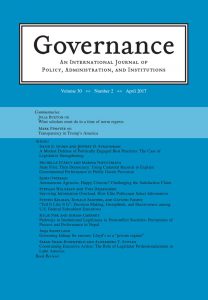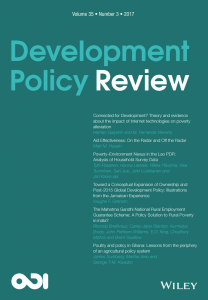Institutional Racism, Political framing, and Spending cuts
Institutional racism is one of the key concepts sociology professors try to impart to students. Institutional racism refers to systemic processes which perpetuate racial inequality even in the absence of racial prejudice and intentional individual-level discrimination. The concept helps students understand how decisions made in the past affects present-day inequality and furthermore that present-day decisions do not take place in a race-neutral realm. Examining how institutions function discourages the use of anecdotal evidence and encourages students to employ a social-level analysis to social phenomena like racial inequality.
While I spend a great deal of time disabusing my students of the notion that a hidden bigot is hiding behind every racially unequal outcome, I remind them that institutional racism is not racism on autopilot. In a recent article entitled, “The Neglected Social Psychology of Institutional Racism,” Tim J. Berard explored the concept of institutional racism and urged sociologists to consider the micro-social foundations of institutional racism. While racism is not an individual-level phenomenon, racism does happen at the micro-social level. In other words, since racism operates both as structure and as culture, the interpersonal level helps form shared ideas and regularize practices.
I found myself thinking about institutional racism and its social psychology as I followed the US budget negotiations. Most politicians, and the American public, support “government spending cuts” – or at least the rhetoric. However, a recent New York Times article highlighted Republican congressional representatives who voice strong support in favor of deep spending cuts but are fighting to preserve federal money for their districts. Their behavior closely mirrors the American public, who favor “spending cuts” but don’t favor cutting much specific spending. The seemingly contradictory behavior of Republicans has been called hypocrisy, while statements of voters have been blamed on ignorance. Most Americans overestimate the size of programs they want to cut and underestimate, or in some cases are unaware of government’s role in those programs they favor. This patterned misunderstanding hardly seems coincidental. Instead, it is more likely that the negative framing of government spending relies on the perception of who benefits from government spending.
Considering the role of race in American politics it is highly unlikely that racial criteria has not played a role in the elite consensus and public support for government spending cuts. Despite silence on racial issues from most politicians, racial attitudes heavily influence party alignment and policy preferences of voters. In other words, attitudes on crime, welfare, and taxes are not race-neutral (see Gilens 1999). Racialized frameworks need not mention race in order for racial attitudes to condition people’s preferences. For example, the inclusion of the phrase “inner city” in a survey about crime yields more punitive attitudes for those who hold negative views of blacks and less punitive attitudes for those who hold positive views of blacks than a question about crime that omits the phrase. Similarly, Winter (2008) found that the basic structure of a racial frame absent racial code words can have a similar effect by priming respondents to bring racial criteria to bear on an issue.
While it is possible that Americans are unaware that the impact of the Great Recession has not been race-neutral and that proposed spending cuts are likely to exacerbate its disparate racial impact, the rhetoric demonizing “government spending” has long had racial undertones. However, it remains unclear if Americans still think “welfare” when they hear “government spending” and how deeply entwined opinions of welfare are with racial attitudes. Politicians can no longer use thinly veiled racist speech to prime citizens. The era of pointing to (imaginary) “welfare queens driving Cadillacs” is over. However, the basic racial framework of contrasting undeserving recipients of government largess with hard-working taxpayers continues to animate much political discourse. To what extent this script has been drained of its racial implications is open to debate. It is possible that many, especially younger, voters simply envision a society of the lazy and the industrious without mapping these qualities onto racial groups. What then are the social-psychological underpinnings of institutional racism when a previously racialized framework operates to add support to public policies that perpetuate racial inequality, but the racial nature of the framework is not apparent to those who support it?
Gung-Ho for Big Cuts in Spending, Less Fond of the Ones That Hurt Back Home
The Neglected Social Psychology of Institutional Racism
Teaching and Learning Guide: The Neglected Social Psychology of Institutional Racism




